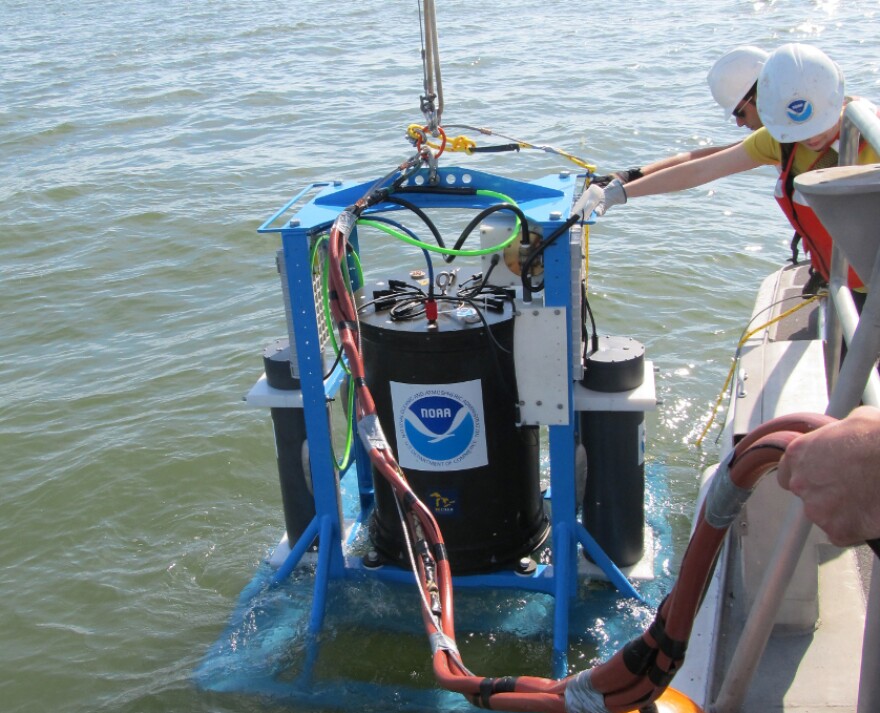Scientists launched a kind of underwater robotic tool in Lake Erie this week to test the water for toxins.
Timothy Davis is a researcher with NOAA's Great Lakes Environmental Research Laboratory.
“We affectionately call it a lab in a can,” he says.
He says this tool takes water samples to test the levels of a toxin in the green blooms of cyanobacteria that've been showing up in the lake each year.
“A compound known as microcystin and that is the primary algal toxin in Lake Erie and what caused the 2014 Toledo water crisis,” says Davis.
That’s when Toledo had to shut down its drinking water supply for two days.
Davis says the tool can detect the toxin in close to real time.
This week, they deployed it near the water intake for the city of Toledo. He says the city already takes water samples inside the intake.
“What our machine is able to do is it allows us to give them early warnings so they can prepare ahead of time, rather than collecting a sample of water in the intake, we’re able to collect it well before it gets to the intake and get data in near real time to water managers who may need that to make decisions,” he says.
So, it’s basically another layer of early warning to cut down on the chance of contaminated water reaching people’s taps.
Davis says they’ll launch the tool again next summer and fall during the peak toxic bloom season.








